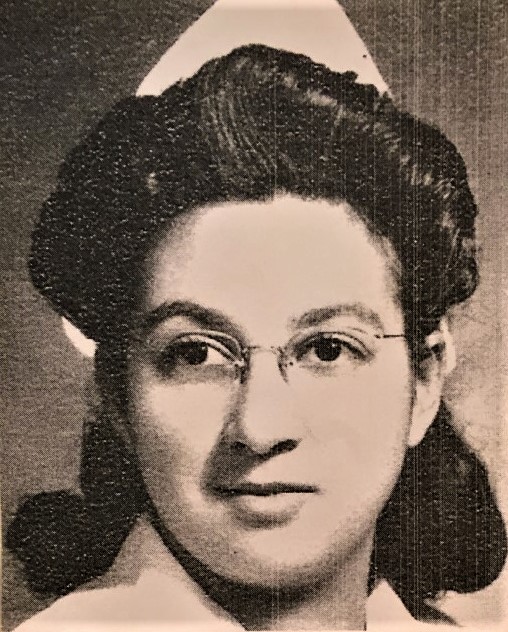Central Bucks school nurse initiated U.S. campaign to defeat the virus that imperiled children in the 1950s.
I remember the other pandemic-like scare. The one in the 1950s paralyzing and killing kids. Mom and Dad sternly warned me and my sisters not to play in puddled water. Nor ride a bicycle through it. Parents believed the water contained the deadly polio virus that caused infantile paralysis. If you got it and were lucky to survive, you might spend the rest of your short life in an “iron lung”, a nightmarish mechanical monster that kept you breathing.
To fight the epidemic when much was unknown, towns where I lived in California spread chemicals on stagnant water. Social distancing took effect as well. Theaters, swimming pools, churches, schools and public meeting places closed whenever there was a substantial outbreak. Parents lived in fear, desperate to protect their children. Rumors spread relentlessly: Italian immigrants brought the virus. Car exhaust caused the disease. Cats spread it. None of it true.
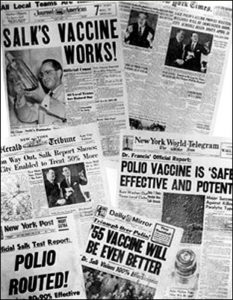
Like the COVID-19 outbreak, most people infected showed no symptoms at all. In those that did, most believed it was typical flu. Sore throat, fever, tiredness, headache, a stiff neck, stomach pain. With polio, the ingested virus traveled from the spinal cord up into the brainstem causing damage. One out of every 200 patients ended up paralyzed. Of them, one in 10 died.
Eventually the truth about the virus became known. It came primarily though contact with feces and untreated sewage. Airborne droplets from an infected individual also were suspect. Symptoms showed up 6-to-20 days after infection making it hard to track. Sound familiar? Those infected remained contagious for two weeks.
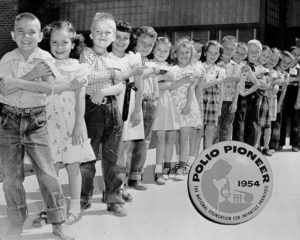
It took eight years of arduous scientific research funded by the March of Dimes before Dr. Jonas Salk and his medical team in Pittsburgh developed a promising vaccine. In February 1954, students in the city’s Arsenal Public School received the first doses of a “killed virus” proven to be effective. Over the next year, more than 1.8 million grade schoolers got the vaccine and became “Polio Pioneers”. The trial series of 3 shots were a resounding success by April 1955. The announcement drew headlines across the country with Dr. Salk achieving historic stature. Mass inoculations began in August. To administer 4 million shots, the federal government mobilized 220,000 volunteers, 20,000 doctors, 64,000 school employees and many more volunteer citizens to staff clinics.
That effort began in Doylestown.
Gladys Nickleby Nelson took the lead. She was the first African American RN hired by the Doylestown School District to be school nurse. She opened and managed the very first U.S. clinic to inoculate citizens. “The polio clinic was the idea of Dr. Salk who was a friend of Dr. James Work, president of The Farm School (now Delaware Valley University),” according to Nancy Nelson, Gladys’ daughter. “Dr. Work contacted the school board who in turn contacted Mrs. Marian Francofiera (principal of the school at Broad and Court Streets). My mother spearheaded the setup of the clinic, coordinating nurses, doctors and community volunteers to help.”
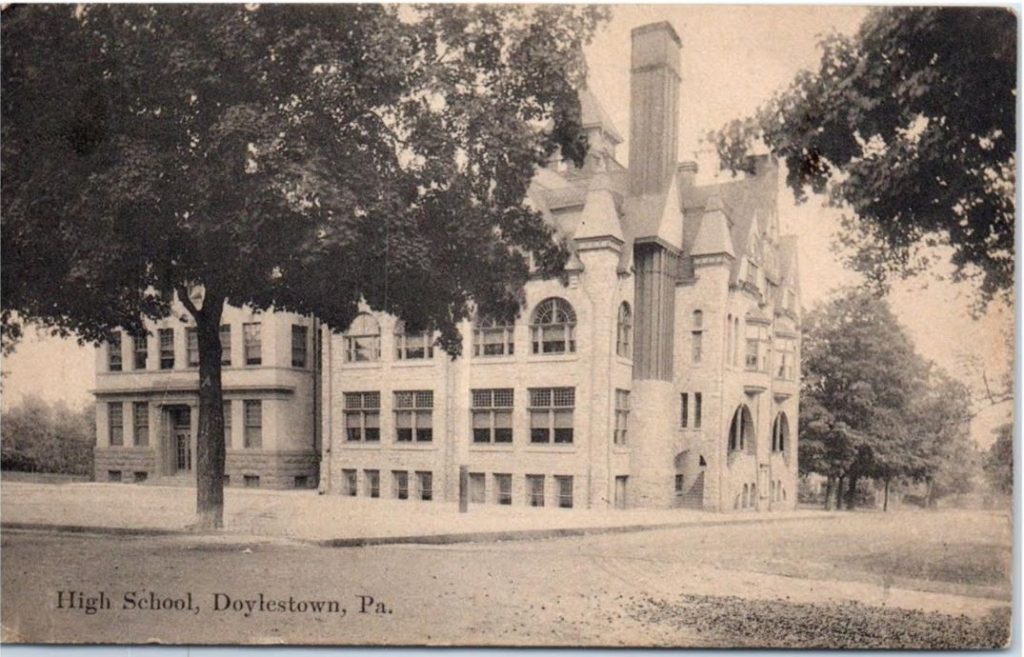
“The clinic may have been opened for as long as two weeks. The shots were given to the youth of the community and then anyone else who wanted to receive it. All were invited.”
Dr. Salk was so pleased with nurse Nelson’s efficiency he asked her to establish other clinics. The national campaign radiated from her. Between 1955 and 1962, medics administered 400 million doses of the Salk vaccine at thousands of clinics patterned after the Doylestown facility. Cases of polio began a steep decline – dipping from 14,647 in 1955 to less than 100 per year in the 1960s. By the 1970s, only 10 cases a year were reported. Since 1979, not a single case of polio originating in the U.S. has been reported, according to polioeradication.org. But active poliovirus can still be found in Pakistan and Afghanistan. Without vaccination, less developed areas of the world are at risk. Rotary International’s PolioPlus program is leading efforts to combat the disease.
In Bucks, the county health department today recommends 4 doses of polio vaccine at 2 months, 4 months, 6-18 months and 4-6 years of age to be fully inoculated. Adults who received the vaccine as children are immune to the disease.
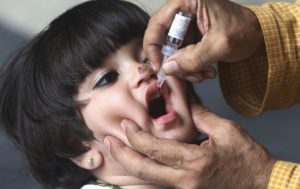
As for Gladys Nelson, she continued caring for students and staff in Doylestown in a 32-year career. “My mother was involved in Easter Seals and the Red Cross,” said her daughter. “Plus, her school nursing job where over the years she gained five more schools in the Central Bucks School District by her retirement. My mother was a busy lady but always had time for her family. She loved working with the youth and helping where needed.”
Having devoted herself to her community, she retired in 1983 and passed away in 2003. She is buried alongside her husband Randall in Doylestown Historic Cemetery.
***
Sources include “Gladys Nickleby Nelson: An Unsung Hero of Polio Eradication
Having Opened the First Polio Immunization Clinic in the United States” by Pamela Sergey with Nancy Nelson; “When Polio Triggered Fear and Panic Among Parents in the 1950s” posted on the web at https://www.history.com/news/polio-fear-post-wwii-era, and “Polio Global Eradication Effort: Every Last Child” on the web at www.polioeradication.org. Thanks also to polio survivor Carol Ferguson who tipped me off to the story of nurse Nelson. Carol contracted the disease in 1954 with minimal symptoms until the late 1990s. She subsequently founded the PA Polio Survivors Network (PPSN).

